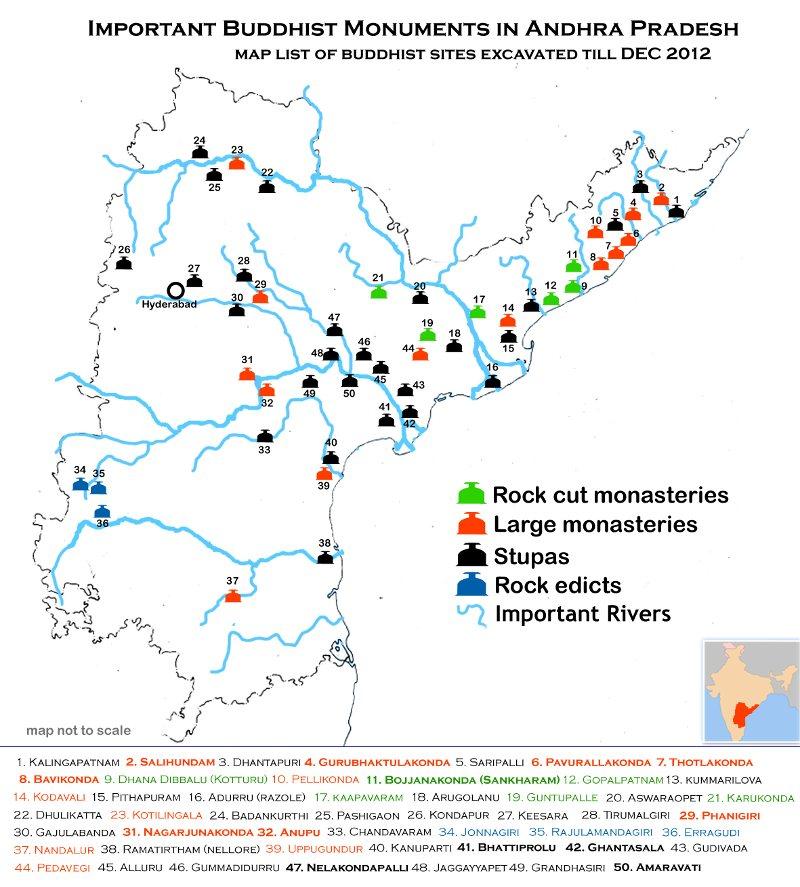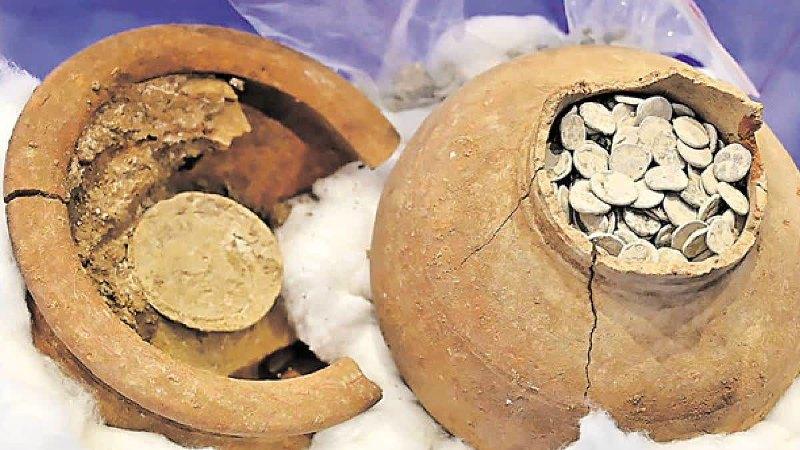Conservation Work Progresses in Phanigiri, Potential UNESCO Heritage Site Linked to Buddhism in India – Buddhistdoor Global
Phanigiri, a 2,100-year-old Buddhist heritage site in Telangana, India, is poised to become a significant Buddhist site in South Asia. Once a small hill covered in wild vegetation, Phanigiri is now recognized for its historical and cultural importance.
The site features a Mahastupa, viharas, apsidal chaitya-grihas, stone-pillared congregation halls, inscriptions, and more. These elements could prove to be vital for reconstructing the cultural history of the region. Dating to the first century BCE to the fourth century CE, experts believe that Phanigiri has the potential to achieve UNESCO World Heritage status if properly conserved.
“In our childhood, we used to play here. There was no protection wall or any restrictions,” said 41-year-old farmer Uppala Somasekhar from the village of Phanigiri in Suryapet District, who recalled finding small pieces of green limestone, remnants of the ancient landscape. (The Indian Express)
Somasekhar mentioned that treasure hunters hoping to find gold had damaged parts of the site. He pointed to the compound wall and gate as signs of the site’s protection since excavations began. He also recalled a theft in 2003 of a significant Buddhist panel, which was later recovered by police.
Phanigiri, derived from the Sanskrit words phana (serpent’s hood) and giri (hill), is related to other significant Buddhist sites, such as Amaravati and Nagarjunakonda in the neighboring state of Andhra Pradesh. The hill is about 46 meters high and is located about 140 kilometers from Telangana’s capital, Hyderabad.
The initial discovery of Phanigiri occurred during explorations by the Department of Archaeology from 1941–44. The first major excavations began in 2001, with the eighth and latest period of work concluding recently. These excavations have unearthed numerous artifacts, including 3,750 lead coins from the Ikshvaku period (300–400 CE) and a Roman gold coin from the time of Emperor Nerva Caesar Augustus (r. 96–98 CE).
Buddhist scholar E Shiva Nagi Reddy explained that Buddhism arrived in Andhra Pradesh during the Buddha’s lifetime in the fifth century BCE. A text in the Sutta Nipata of early Buddhism mentions a teacher named Bavari who may have come from Telangana. The spread of Buddhism in the region is also attributed to the conversion of the ruler of Assakajanapata in southern Telangana.
Phanigiri’s importance is highlighted by the vertical panel sculptures carved in green limestone, often referred to as the “jewel of Phanigiri” due to their quality and storytelling. Four panels loaned to New York’s Metropolitan Museum and the National Museum in South Korea were recently returned.
Security guard Phanigiri Veeraiah noted that the site attracted scholars, students, and tourists from countries such as China, Japan, Nepal, Sri Lanka, and Thailand. Visitor numbers were increasing, indicating growing interest in the site, he said.
The director of the Department of Archaeology, Bharati Hollikeri, emphasized the site’s potential for UNESCO World Heritage status, but noted that the process was lengthy. “The process is very long. We have to send a dossier for inclusion in the tentative list, and there are already 57 from India in the tentative list. Surely, this site has potential,” she said. “We are also planning to build a bigger and modern museum near the site to house all the artefacts from Phanigiri. The excavation is more or less over, and our focus is on conserving the site. We need to build some amenities, too, for the people visiting.” (The Indian Express)
Heritage activist Sreeramoju Haragopal called for scientific preservation of artifacts and a comprehensive book on the site’s findings. He emphasized the importance of conserving the chaithya-girhas and viharas.
The historical significance of Phanigiri, along with ongoing conservation efforts, highlights its potential to become a prominent heritage site and contribute to the understanding of Buddhism’s spread and influence in the region.
See more
A potential UNESCO heritage site, why Phanigiri in Telangana is central to tracing region’s Buddhist past (The Indian Express)
A New York spotlight for Buddhist artefacts from Telangana’s Phanigiri (The Hindu)
Pot With Lead Coins of Ikshvaku Period Found in Phanigiri Buddhist Temple Site (ETV Bharat)
Related news reports from BDG
Environmentalists Call for Restoration of Thotlakonda Buddhist Complex in India
Archaeologists in Bangladesh Unearth Ancient Buddhist University Pandit Vihar
1,200-Year-Old Buddhist Temple Structure Unearthed in Malaysia
Young Buddhist Scholars Meet in New Delhi for Conference on Buddhist Pilgrimage
2,300-Year-Old Buddhist Elephant Statue Unearthed in India
Images are for reference only.Images and contents gathered automatic from google or 3rd party sources.All rights on the images and contents are with their legal original owners.




Comments are closed, but trackbacks and pingbacks are open.